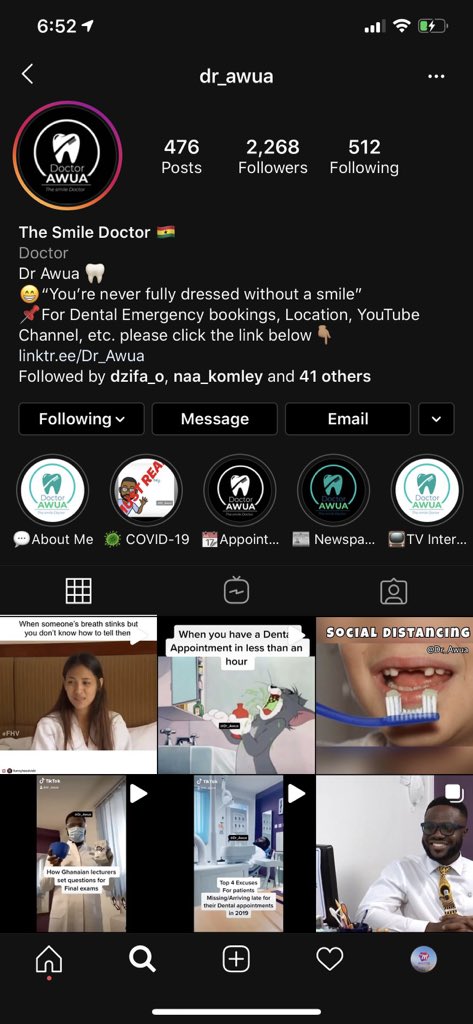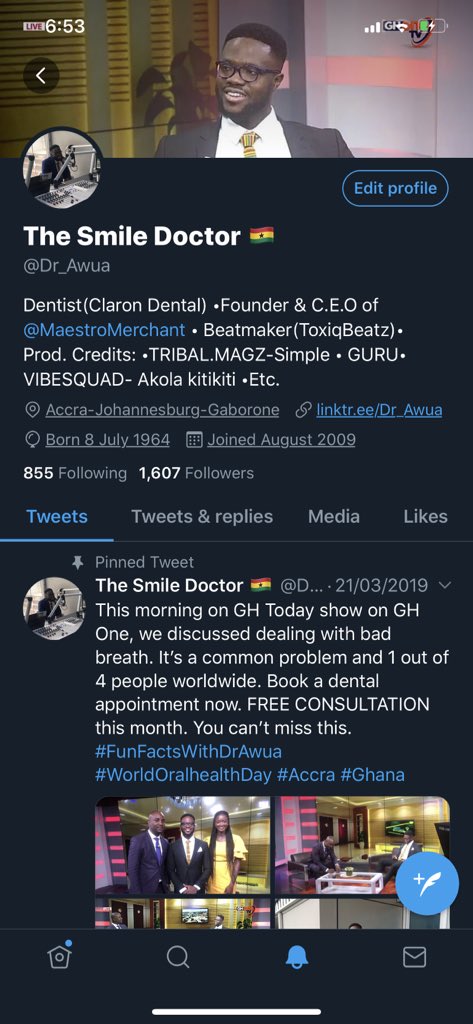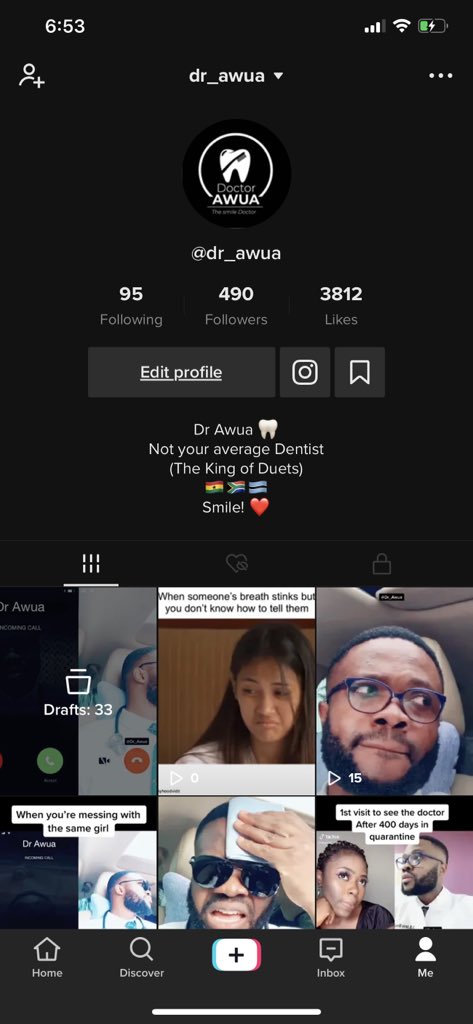A long thread...
Bad breath, which is scientifically termed as halitosis, is a noticeably unpleasant odor from the breath regardless of whether it comes from the mouth(oral) or non-oral sources.
It is derived from the Latin word “halitus” which means breath and Greek suffix “osis” which means abnormal. Bad breath in our local languages translates as “anumkankan”(Akan), “dan shala”(Ga) and “bakinka wari”(Hausa).
Halitosis has been a problem in the past and it was first documented in manuscripts dating as far back as 1550 BC. It is a very common problem affecting 1 in 4 individuals at a point in time and it is the 3rd most common complaint that clients bring to the dental clinic
In Ghana, a study carried out at the University of Ghana Medical & Dental School revealed prevalence of self-reported halitosis to be 18%.
Halitosis has several effects on individuals including social, personal development and economic problems. Individuals who report with halitosis do not like to speak in public, they avoid friends and family and shy away from work colleagues
Our grandmothers in the village would always attribute bad breath to a scent coming from the head but this is totally false.
According to a classification by Miyazaki et al in 1999, halitosis can be grouped into genuine, pseudohalitosis and halitophobia. This classification helps us as dentists to know how to treat it since each of the groups have different treatment options.
Genuine halitosis can be further grouped into physiologic and pathologic. Physiologic halitosis means that there is no apparent disease in the mouth causing the bad breath. It is usually temporary or transient.
Examples include the morning bad breath after waking up, eating certain foods such as onions and garlic, certain spices, cheese, not hydrating often causing dry mouth, stress, excessive alcohol intake and smoking.
Pathologic halitosis is bad breath as a consequence of an infection in the mouth or a systemic disease. This is further grouped into intraoral(coming from the mouth) and extraoral(coming from other places apart from the mouth). Intraoral causes are more common(90%) than extraoral
Intraoral causes include tongue coatings, periodontal disease(severe gum disease), poor oral hygiene, tooth decay, oral cancers, poor care of dentures, etc.
Extraoral causes include infection in the tonsils(tonsillitis), nasal obstructions, chronic sinusitis, pneumonia, intestinal gas production, diabetes, liver failure, kidney failure as well as the use of certain long term medications(amphetamine, disulfiram, etc.)
Pseudohalitosis is the 2nd group of halitosis which occurs in apparently healthy individuals when an obvious malodor cannot be perceived but the individual is convinced that he or she suffers from it.
Halitophobia is the 3rd group of halitosis and it is an exaggerated fear of having halitosis when there is no physical or social confirmation to suggest that the individual has it.
It usually occurs after treatment of genuine halitosis and may also be associated with obsessive compulsive disorder and psychosis.
In conclusion, a proper diagnosis by a dentist is key to successful treatment so instead of gargling your mouth with that mouthwash next to your bathroom sink or throwing some mints into your mouth, kindly visit your dentist. Dentistry is not expensive; negligence is  https://abs.twimg.com/emoji/v2/... draggable="false" alt="😊" title="Smiling face with smiling eyes" aria-label="Emoji: Smiling face with smiling eyes">
https://abs.twimg.com/emoji/v2/... draggable="false" alt="😊" title="Smiling face with smiling eyes" aria-label="Emoji: Smiling face with smiling eyes">
In case of have any questions, don’t hesitate to hit me up. Follow me on Instagram, TikTok, Twitter and YouTube @Dr_Awua for daily posts on your oral health  https://abs.twimg.com/emoji/v2/... draggable="false" alt="✌🏽" title="Victory hand (medium skin tone)" aria-label="Emoji: Victory hand (medium skin tone)">
https://abs.twimg.com/emoji/v2/... draggable="false" alt="✌🏽" title="Victory hand (medium skin tone)" aria-label="Emoji: Victory hand (medium skin tone)">

 Read on Twitter
Read on Twitter





